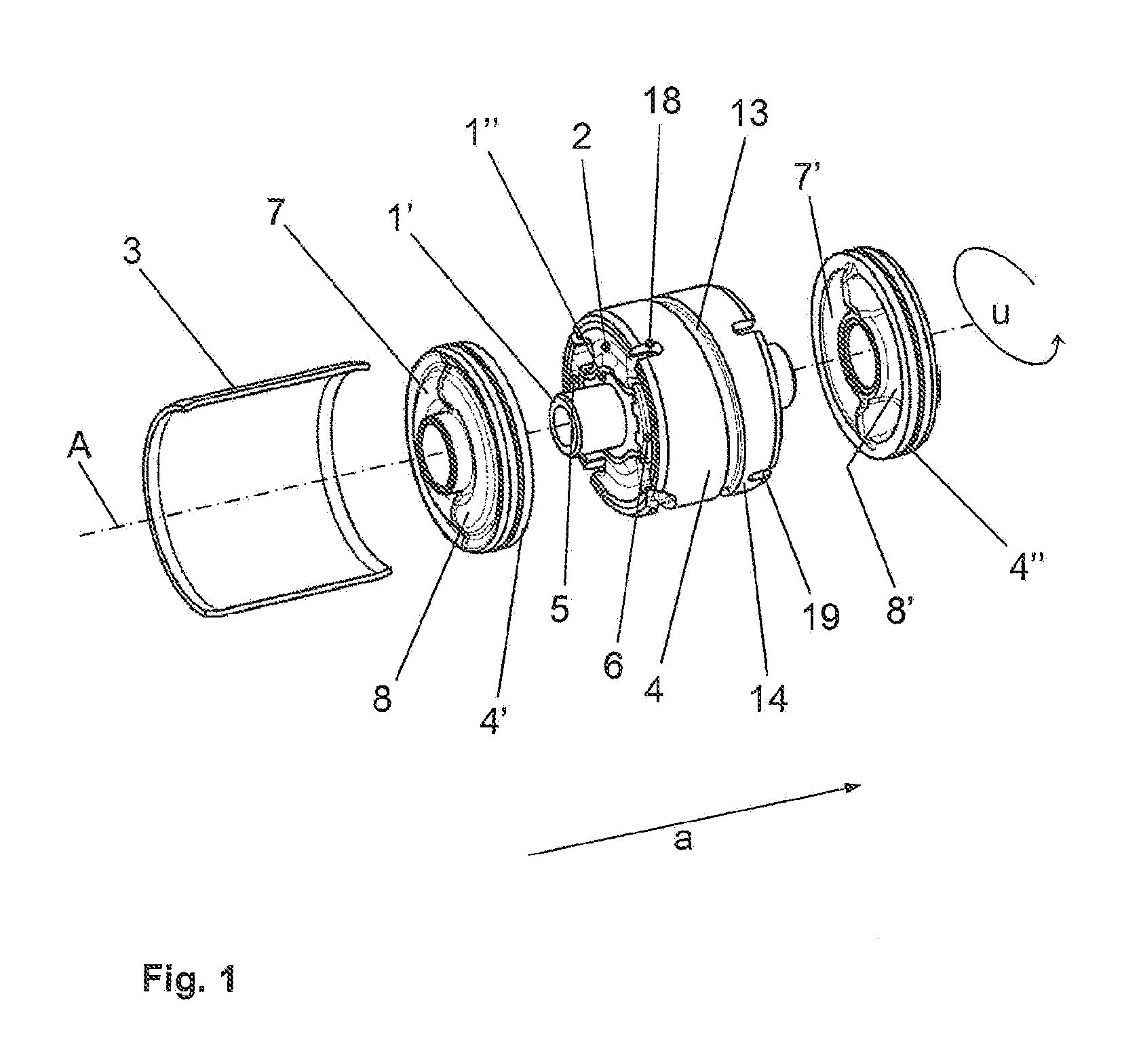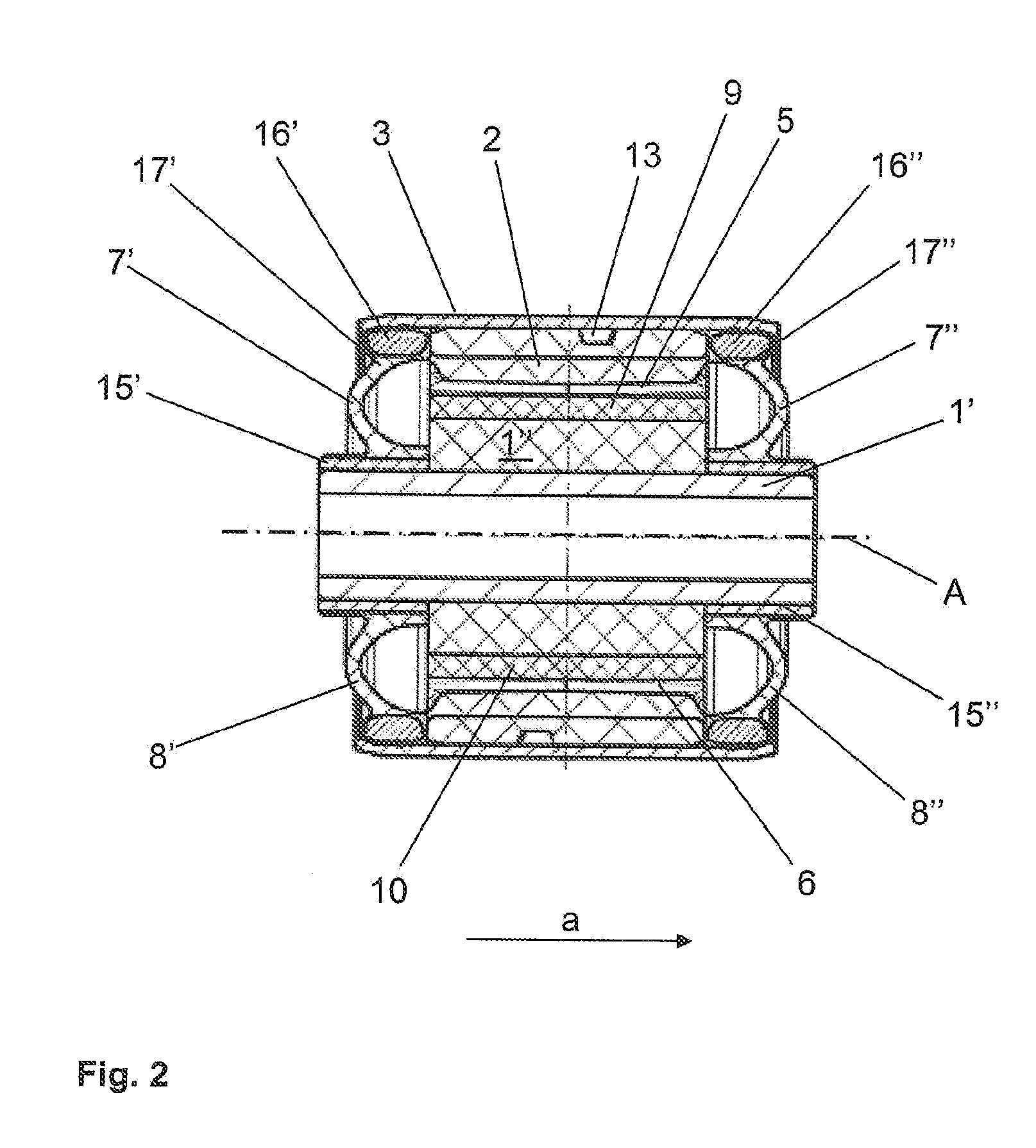Hydraulically Damping Bushing Bearing
a technology of elastomeric bushing bearings and bearings, which is applied in the direction of elastic bearings, bearing units rigid support, shock absorbers, etc., can solve the problems of inability to reliably predict the damping characteristic of bearings with large cardanic loads, the geometry of the damping means channel is disadvantageously not clearly defined, and the conventional elastomeric bushing bearings cannot withstand a limited thermal load
- Summary
- Abstract
- Description
- Claims
- Application Information
AI Technical Summary
Benefits of technology
Problems solved by technology
Method used
Image
Examples
Embodiment Construction
[0027]FIG. 1 shows a possible embodiment of the bushing bearing according to the invention in a three-dimensional view. The bearing is shown in the Figure in an exploded view. It is composed of an inner bearing part 4, 4′, 4″ and an outer sleeve 3 receiving the inner bearing part 4, 4′, 4″, wherein the outer sleeve 3 is shown in the diagram with a cut-out circumferential segment. The inner bearing part 4, 4′, 4″ is constructed in segments with respect to the longitudinal axis A of the bearing. It consists of the center main segment 4 with the bearing core 1′, 1″ and the elastomeric bearing body 2, which is connected with the bearing core 1′, 1″ through vulcanization and in which the chambers 5, 6 for the damping means are formed. The outside of the chambers is axially delimited by the two end segments 4′, 4″ with the expanding walls 7′, 7″, 8′, 8″ formed thereon. The end segments 4′, 4″ (see FIG. 2) consist of a rigid inner ring 15′, 15″, a rigid outer ring 16′, 16″ and an elastic o...
PUM
 Login to View More
Login to View More Abstract
Description
Claims
Application Information
 Login to View More
Login to View More - R&D
- Intellectual Property
- Life Sciences
- Materials
- Tech Scout
- Unparalleled Data Quality
- Higher Quality Content
- 60% Fewer Hallucinations
Browse by: Latest US Patents, China's latest patents, Technical Efficacy Thesaurus, Application Domain, Technology Topic, Popular Technical Reports.
© 2025 PatSnap. All rights reserved.Legal|Privacy policy|Modern Slavery Act Transparency Statement|Sitemap|About US| Contact US: help@patsnap.com



